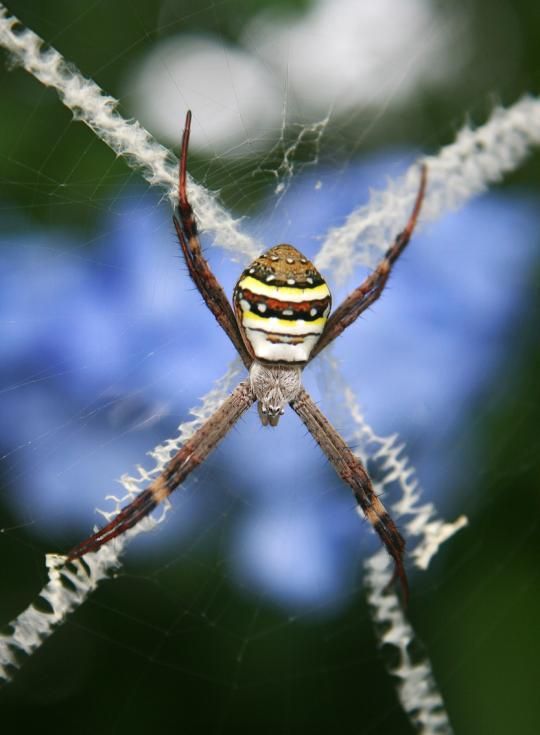|
|
Spider Web
|
• Reproduction and life cycle
Spiders reproduce sexually and fertilization is internal but indirect, in other words the sperm is not inserted into the female's body by the male's genitals but by an intermediate stage. Unlike many land-living arthropods, male spiders do not produce ready-made spermatophores (packages of sperm) but spin small sperm webs on to which they ejaculate and then transfer the sperm to syringe-like structures on the tips of their pedipalps. When a male detects signs of a female nearby he checks whether she is of the same species and whether she is ready to mate; for example in species that produce webs or "safety ropes", the male can identify the species and sex of these objects by "smell".
Spiders generally use elaborate courtship rituals to prevent the large females from eating the small males before fertilization, except where the male is so much smaller that he is not worth eating. In web-weaving species precise patterns of vibrations in the web are a major part of the rituals, while patterns of touches on the female's body are important in many spiders that hunt actively, and may "hypnotize" the female. Gestures and dances by the male are important for jumping spiders, which have excellent eyesight. If courtship is successful, the male injects his sperm from the pedipalps into the female's genital opening, known as the epigyne, on the underside of her abdomen. Female's reproductive tracts vary from simple tubes to systems that include seminal receptacles in which females store sperm and release it when they are ready.
Males of the genus Tidarren amputate one of their palps before maturation and enter adult life with one palp only. The palps are 20% of male's body mass in this species, and detaching one of the two improves mobility. In the Yemeni species Tidarren argo, the remaining palp is then torn off by the female. The separated palp remains attached to the female's epigynum for about four hours and apparently continues to function independently. In the meantime the female feeds on the palpless male. In over 60% of cases the female of the Australian redback spider kills and eats the male after it inserts its second palp into the female's genital opening; in fact the males co-operate by trying to impale themselves on the females' fangs. Observation shows that most male redbacks never get an opportunity to mate, and the "lucky" ones increase the likely number of offspring by ensuring that the females are well-fed. However males of most species survive a few matings, limited mainly by their short life spans. Some even live for a while in their mates' webs.
|
|









